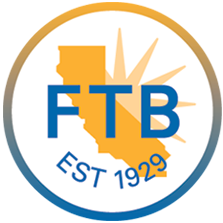Form 2220, Underpayment of Estimated Tax
by Corporations
Excise Tax Forms
Employment Tax Forms
Information Returns
Extension Forms
FinCEN BOIR
General
Introduction
Form 2220, Underpayment of Estimated Tax by Corporations, is used by corporations, tax-exempt organizations, and private foundations to calculate and report any underpayment of estimated taxes. For corporations that have underestimated their tax liability, Form 2220 is necessary to determine if a penalty is due.
In this resource guide, we aim to brief on Form 2220, providing valuable insights into its purpose, the entities obligated to file, the filing requirements, and addressing common queries.
Table of Contents
What is Form 2220?
Form 2220 is a tax form used to calculate any underpayment of estimated tax by corporations. Corporations are required to pay their taxes throughout the year in quarterly installments. If these payments are not made on time or in the correct amounts, an underpayment penalty may apply, and Form 2220 helps determine the amount of this penalty.
This form is essential for both Form 990-T, used by tax-exempt organizations to report unrelated business income and Form 990-PF, the return for private foundations.
Who must file Form 2220?
Corporations, tax-exempt organizations, and private foundations that underpay their estimated taxes are required to file Form 2220. This includes:
- Corporations: Any corporation that did not pay enough estimated tax throughout the year must file Form 2220 to calculate the underpayment penalty.
- Tax-Exempt Organizations: Organizations that file Form 990-T to report unrelated business taxable income (UBTI) and fail to make timely estimated tax payments must file Form 2220 to compute the penalty for underpayment.
- Private Foundations: Foundations that file Form 990-PF must also use Form 2220 if they underpay their estimated tax obligations.
Corporations or organizations may not need to file the form if they qualify for an exception to the penalty, such as meeting the safe harbor rule or if their total tax liability is below a certain threshold.
Choose TaxZerone for a seamless e-filing experience and stay compliant with the IRS.
Your journey to stress-free tax filing starts here!
Choose TaxZerone to complete your Form 2220 filing
TaxZerone is your trusted IRS-authorized e-file service provider. With us, experience the magic of a seamless filing experience and get instant updates on your return’s filing status.
Our expert assistance is not just a promise; it's a guarantee. From start to finish, we ensure to guide your e-filing experience with ease, armed with the support you need.
Here’s how your Form 990-T/990-PF return with Form 2220 is transmitted to the IRS in 3 simple steps!
- Provide Organization Details - Choose the tax year for which you want to file the 990-T/990-PF return, and provide your organization’s details.
- Preview Form 2220 - Attach Form 2220 to calculate any underpayment of estimated taxes for your organization and preview the information provided in the return for accuracy before transmitting.
- Transmit to the IRS - Transmit Form 8995 along with your 990-T/990-PF Return to the IRS and get the acceptance in just a few hours.
And here's another WOW thing about us – should the IRS happen to reject your information return, fear not! TaxZerone makes sure you can rectify the errors and retransmit your form back to the IRS, all free of cost!
Embrace the Future of Tax Filing – Choose TaxZerone Today!
Make your e-filing process simple by clicking the button below.
Start E-filing NowCommonly Asked Questions
1. When is a tax-exempt organization required to file Form 2220?
Tax-exempt organizations that file Form 990-T to report unrelated business income must file Form 2220 if they underpay their estimated taxes. This form helps calculate the penalty for any underpayment of taxes related to unrelated business income.
2. How do estimated tax payments work for corporations and tax-exempt organizations?
Corporations and tax-exempt organizations are required to make quarterly estimated tax payments throughout the year. If these payments are not made on time or in the correct amount, the IRS may impose an underpayment penalty, which is calculated using Form 2220.




